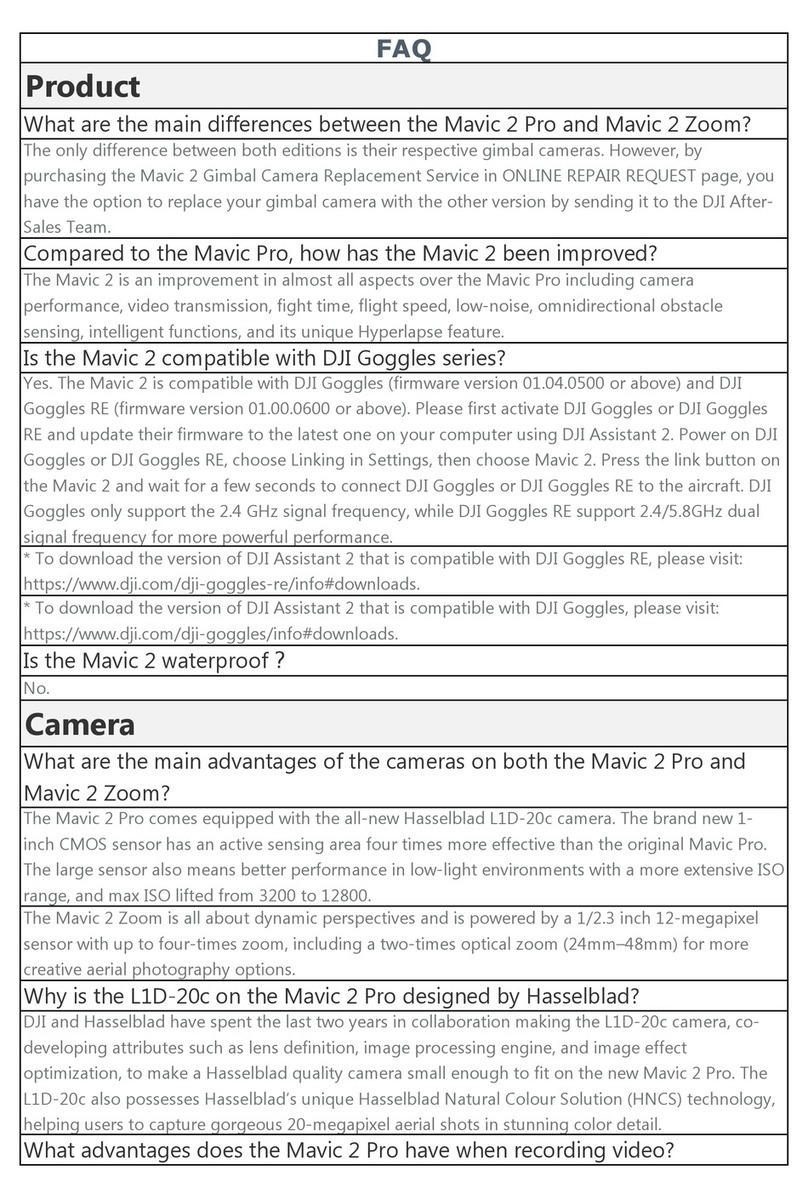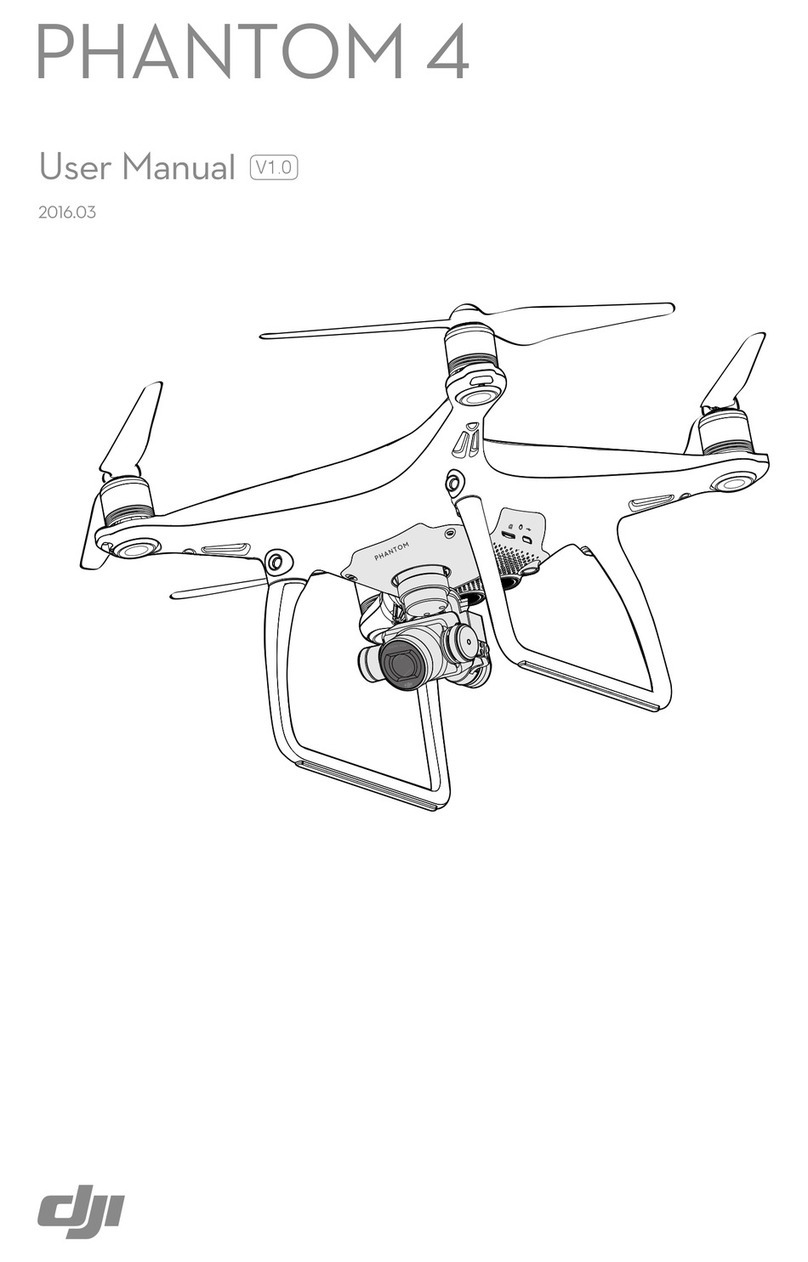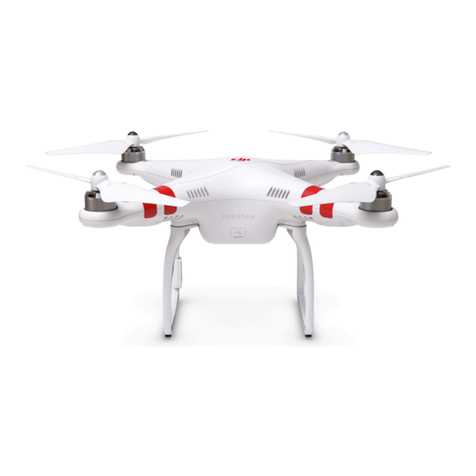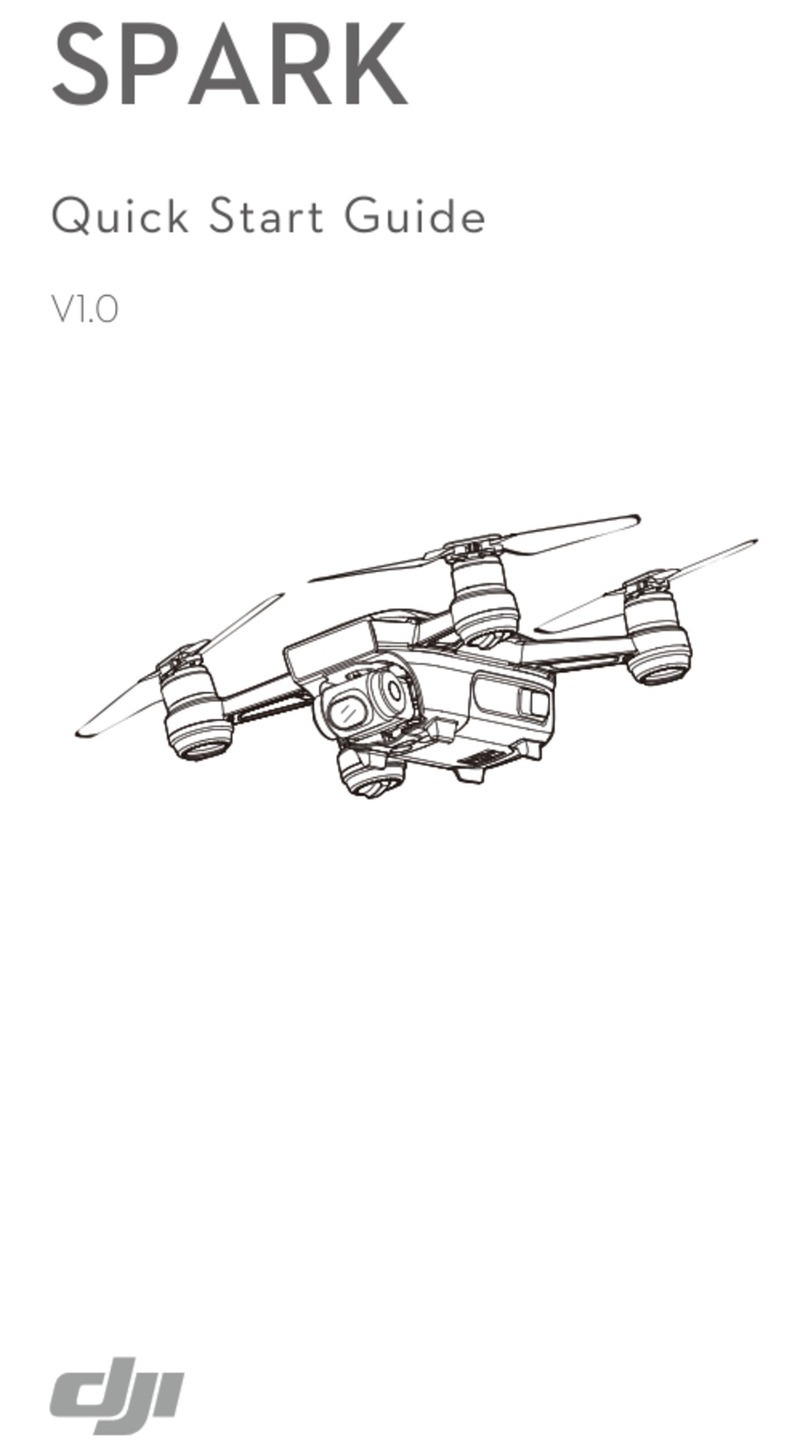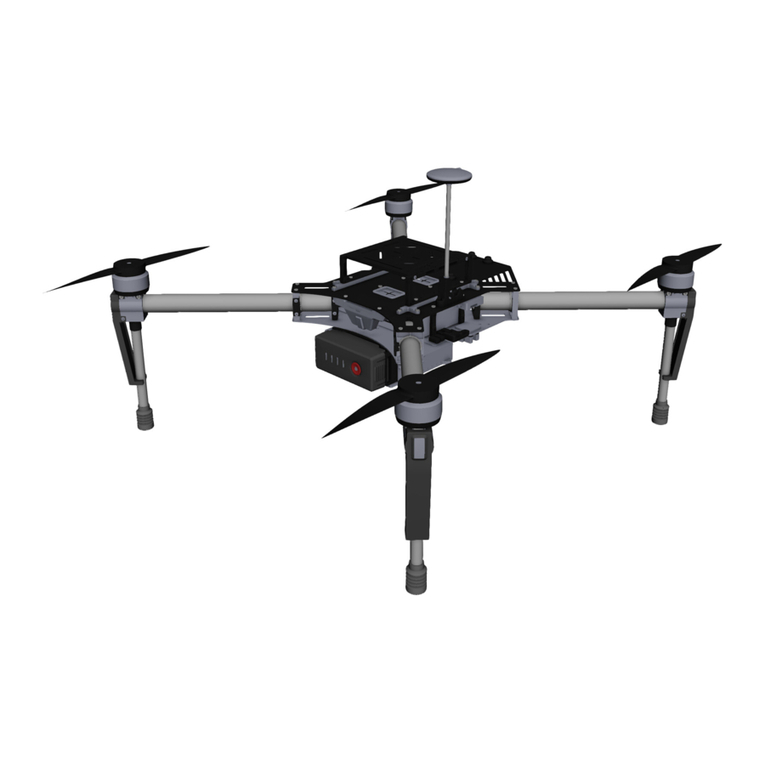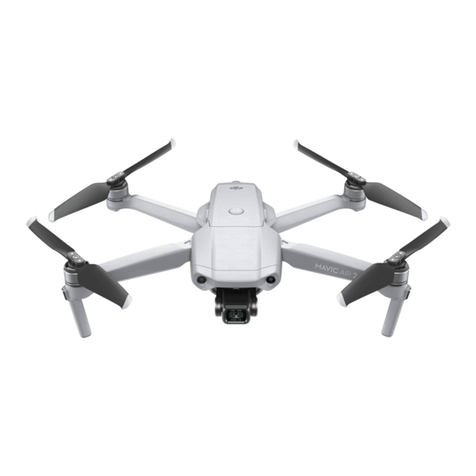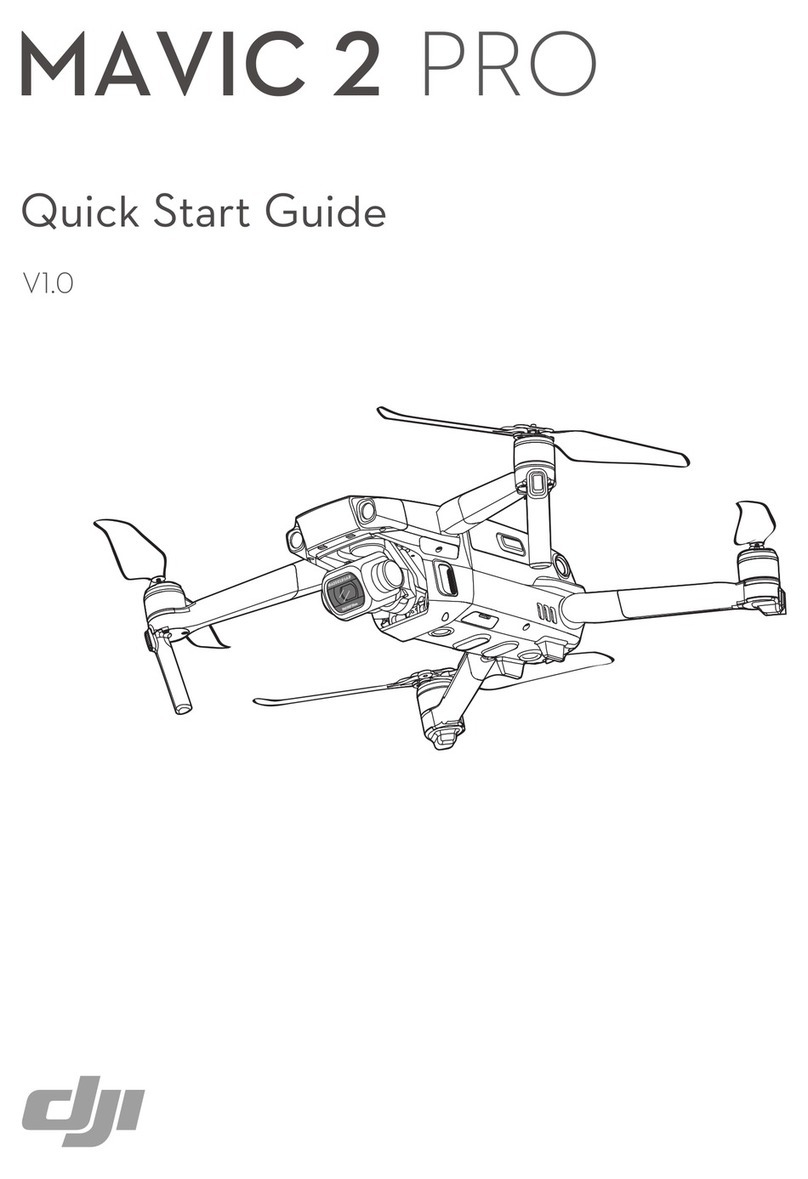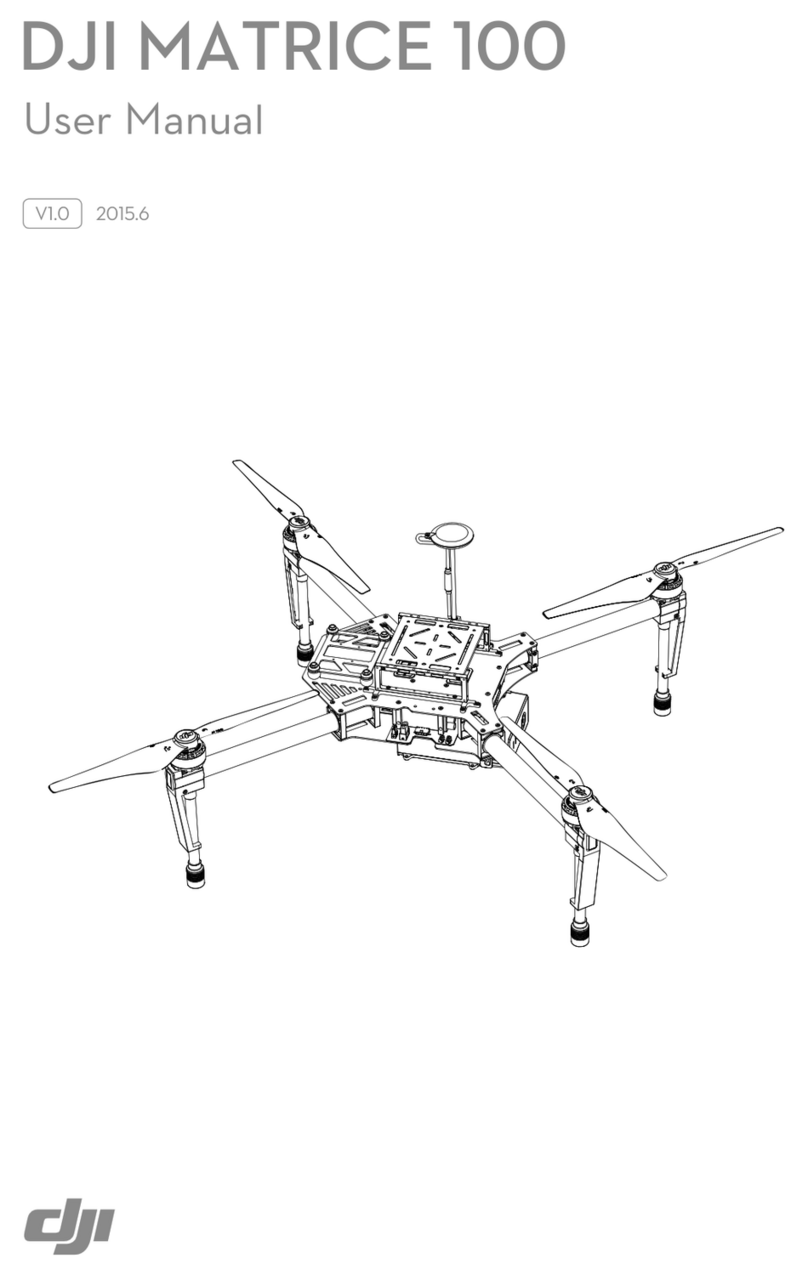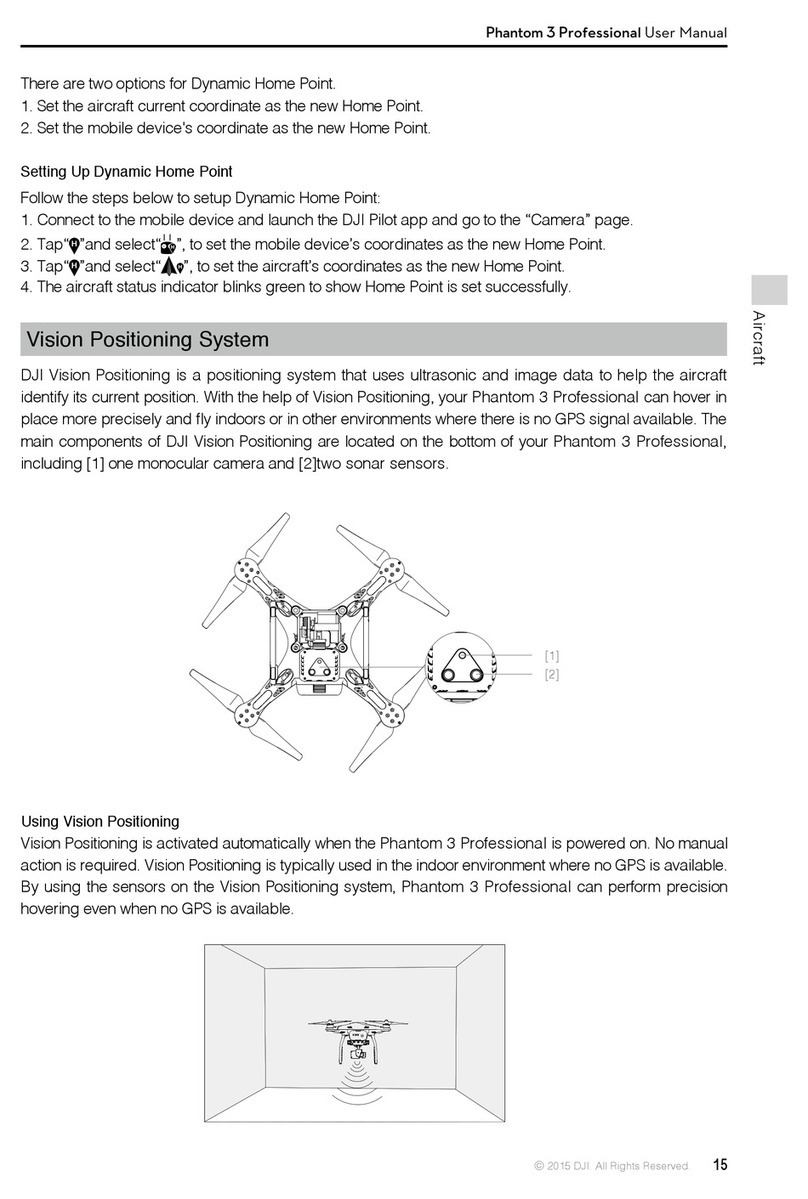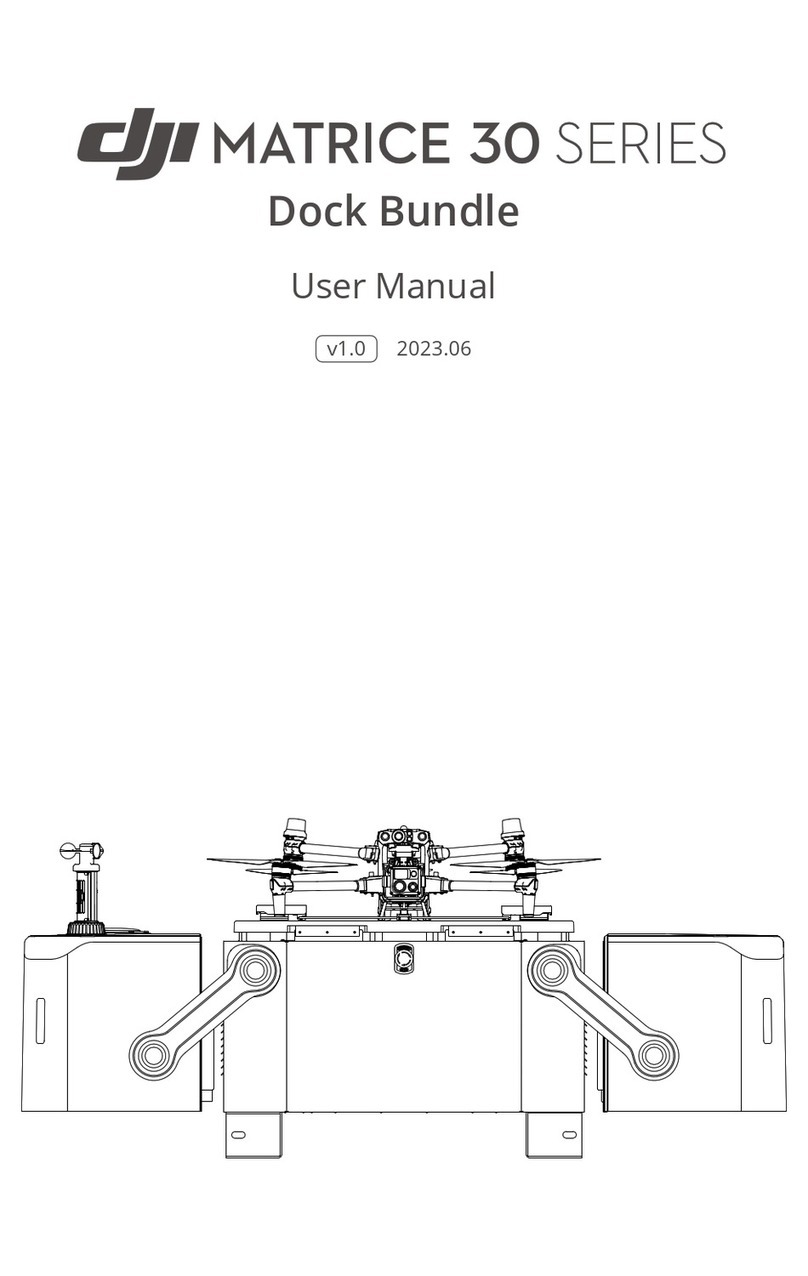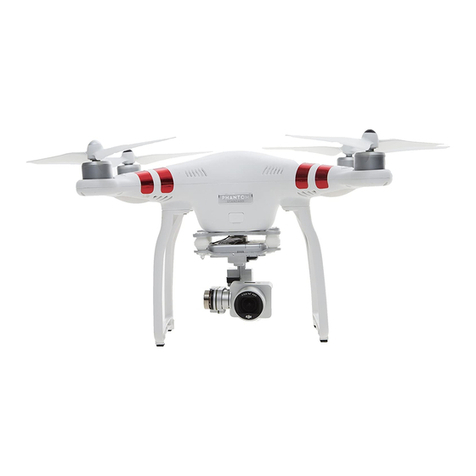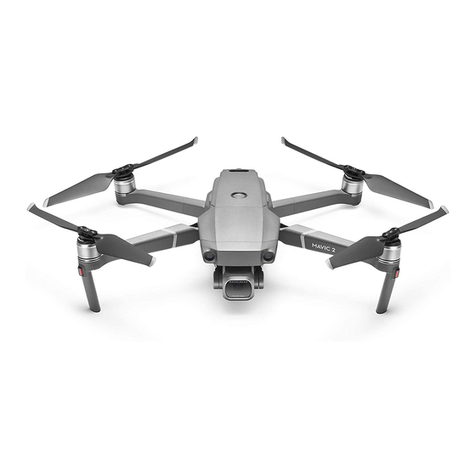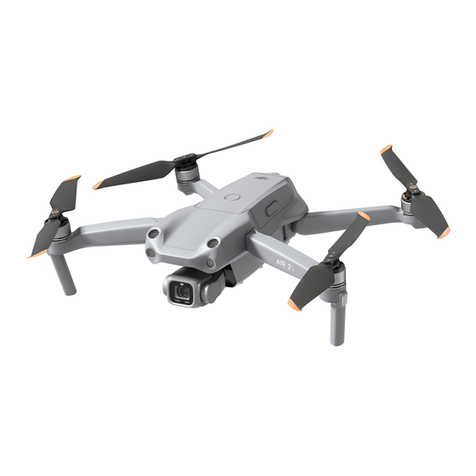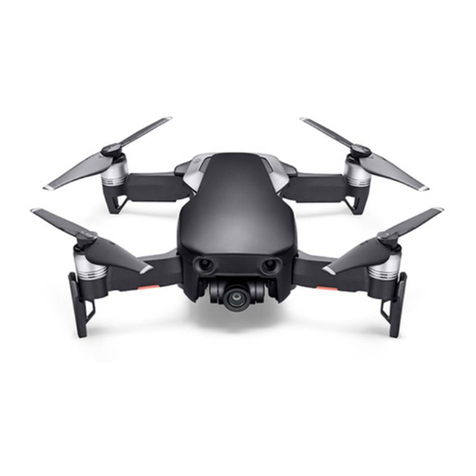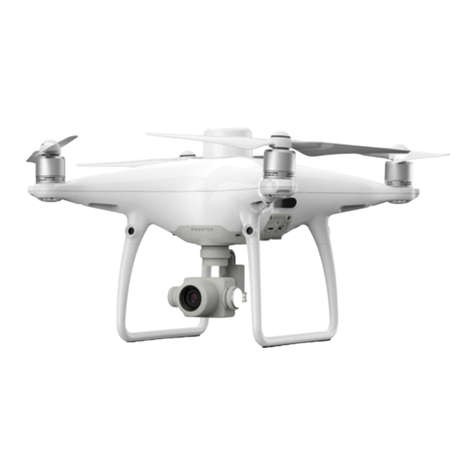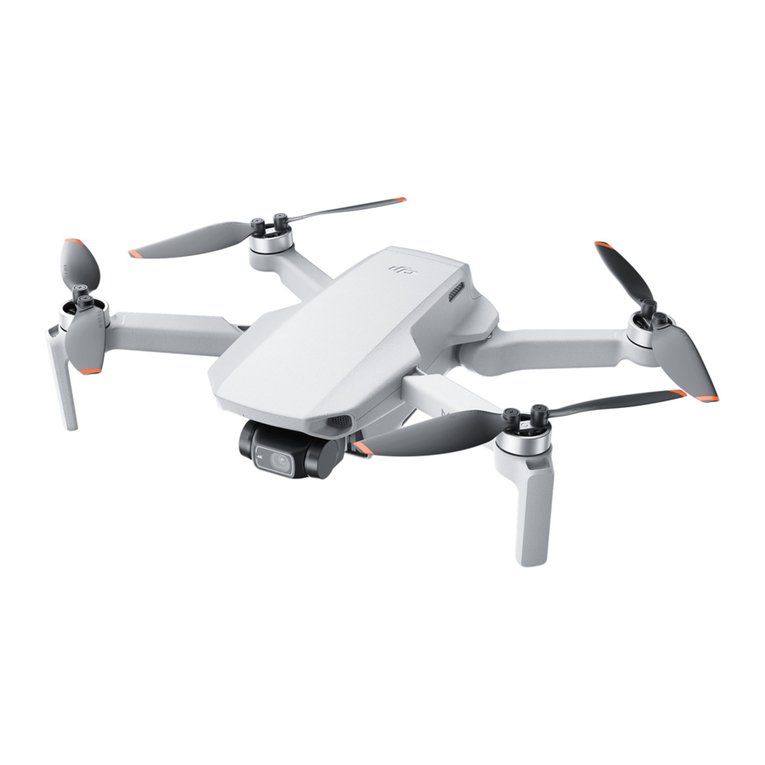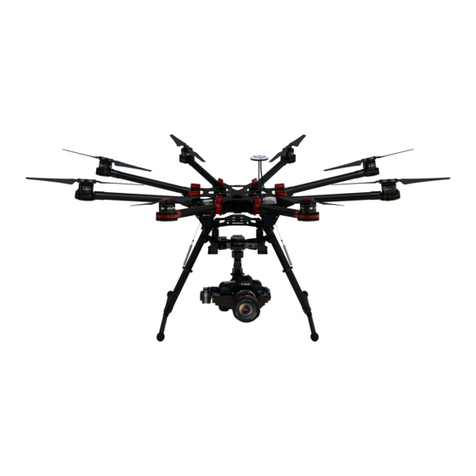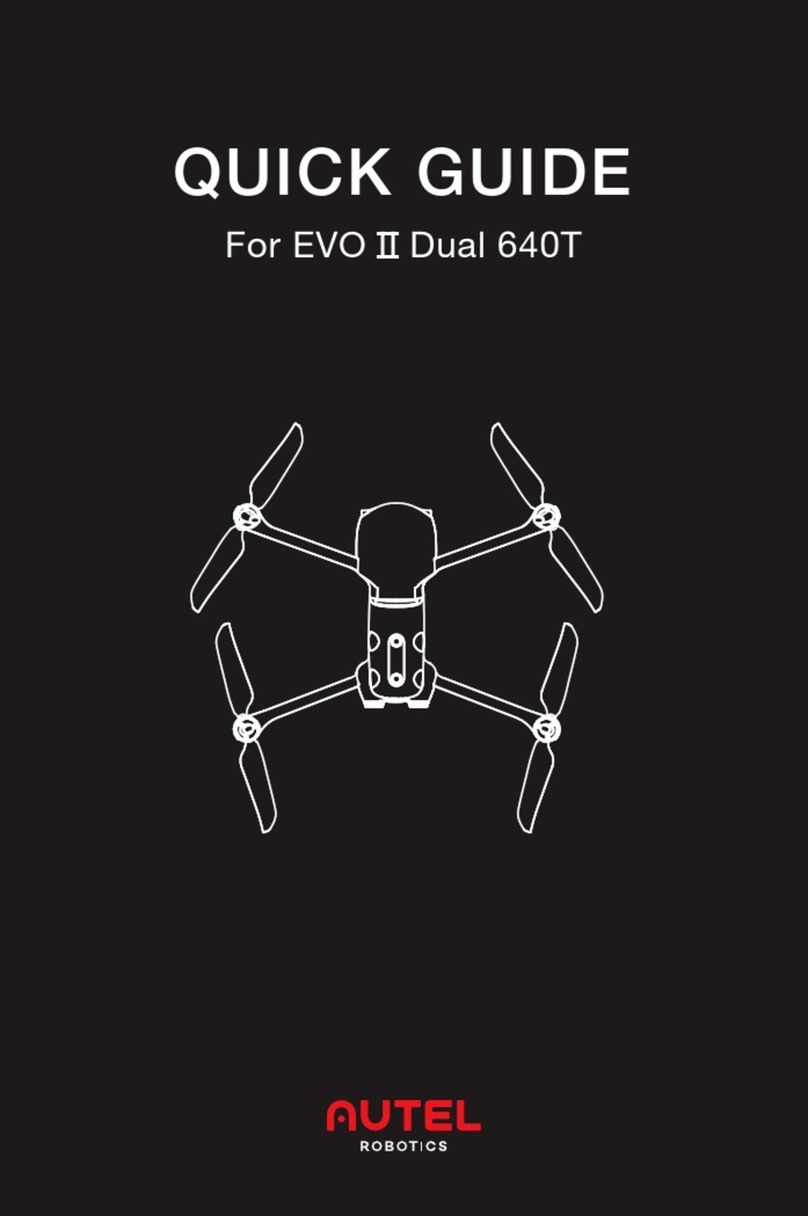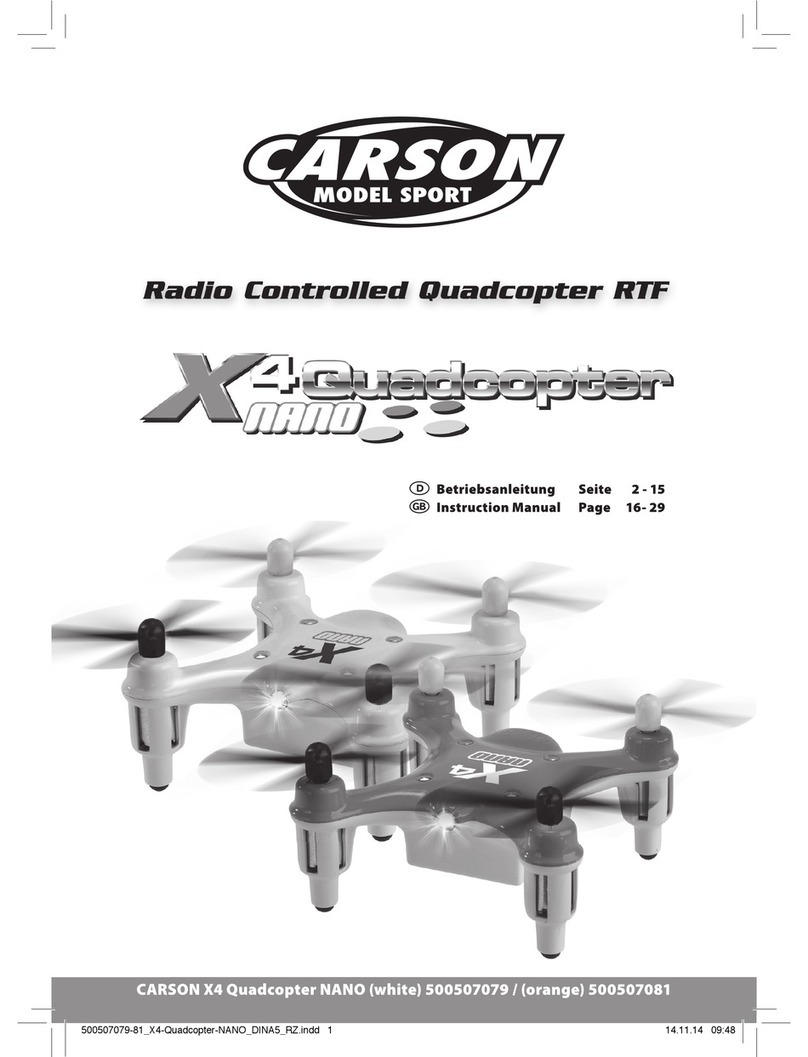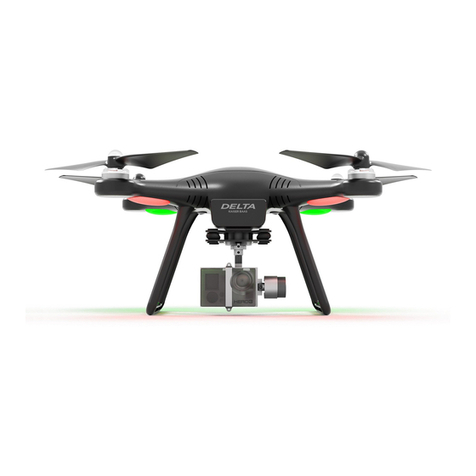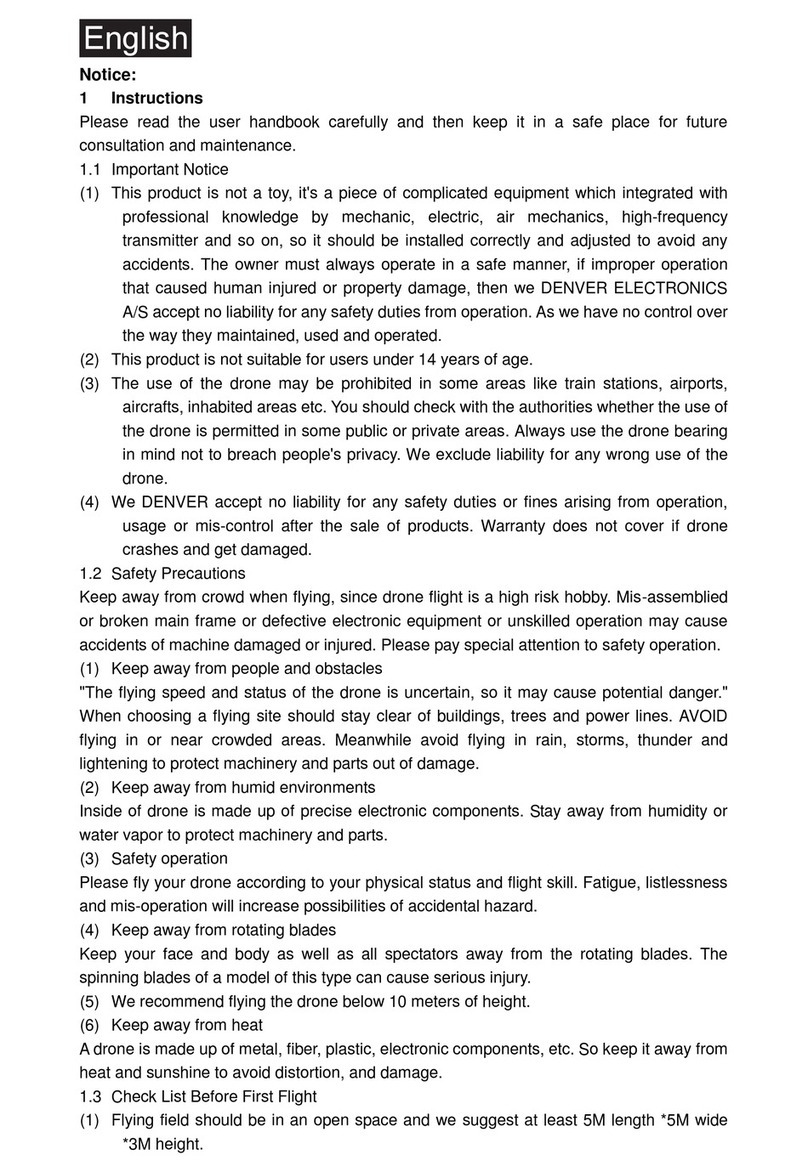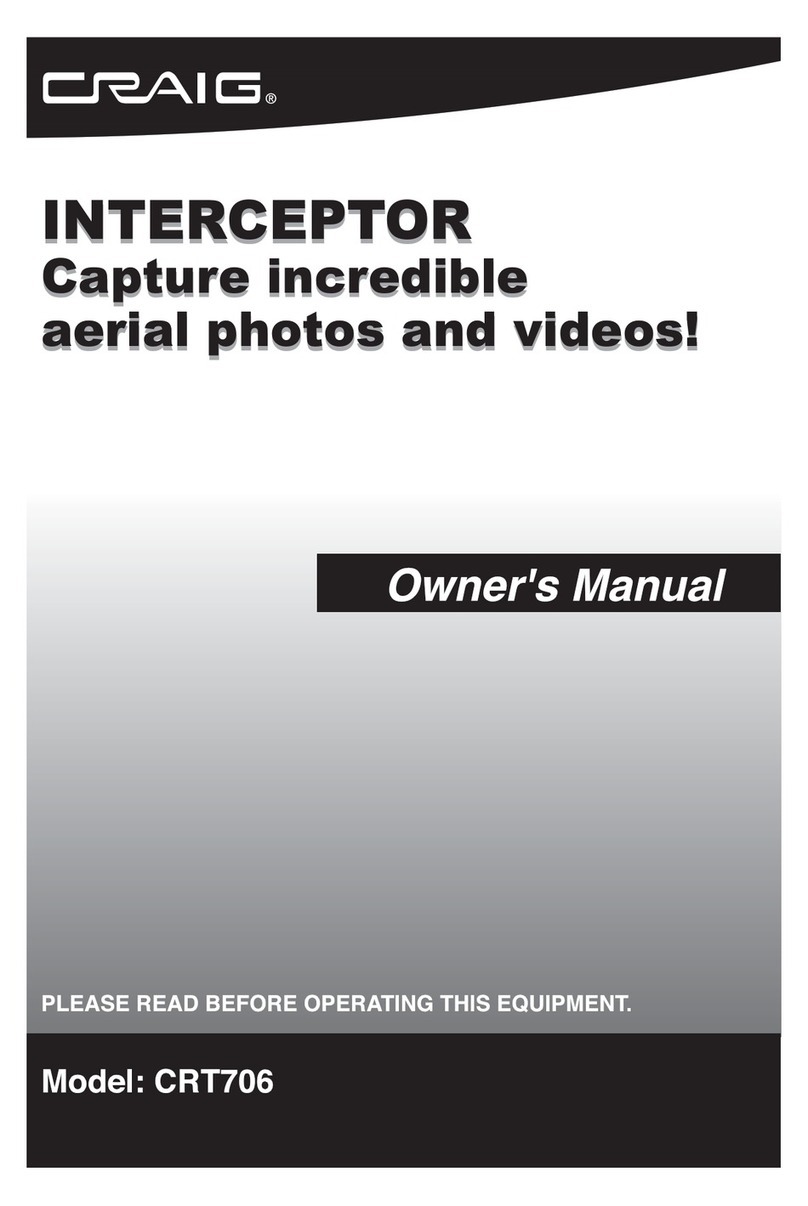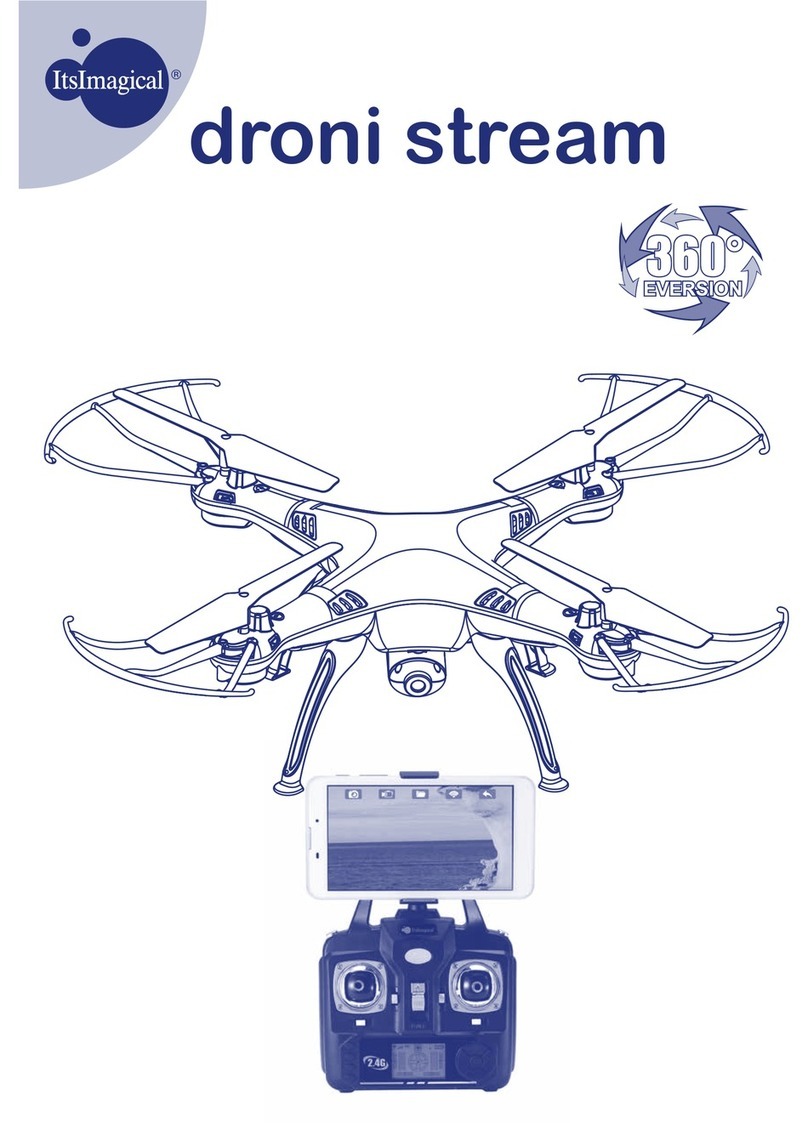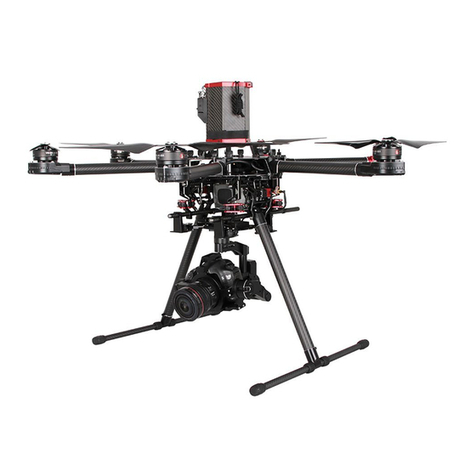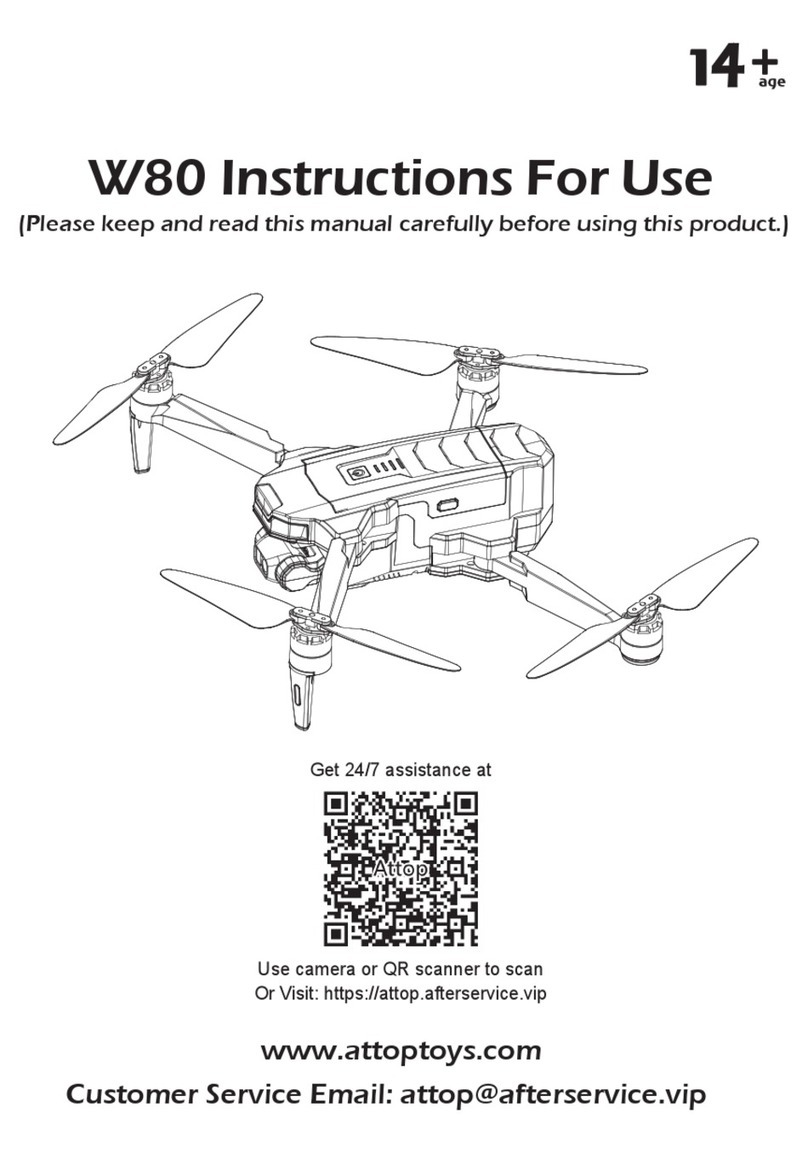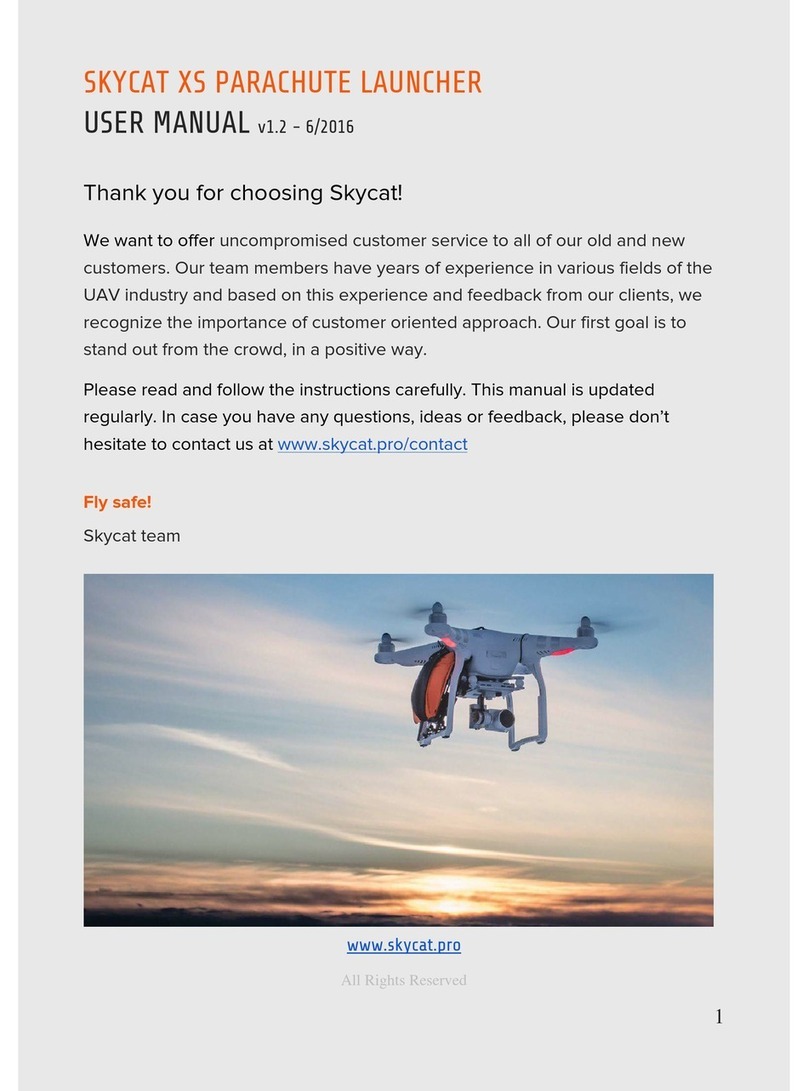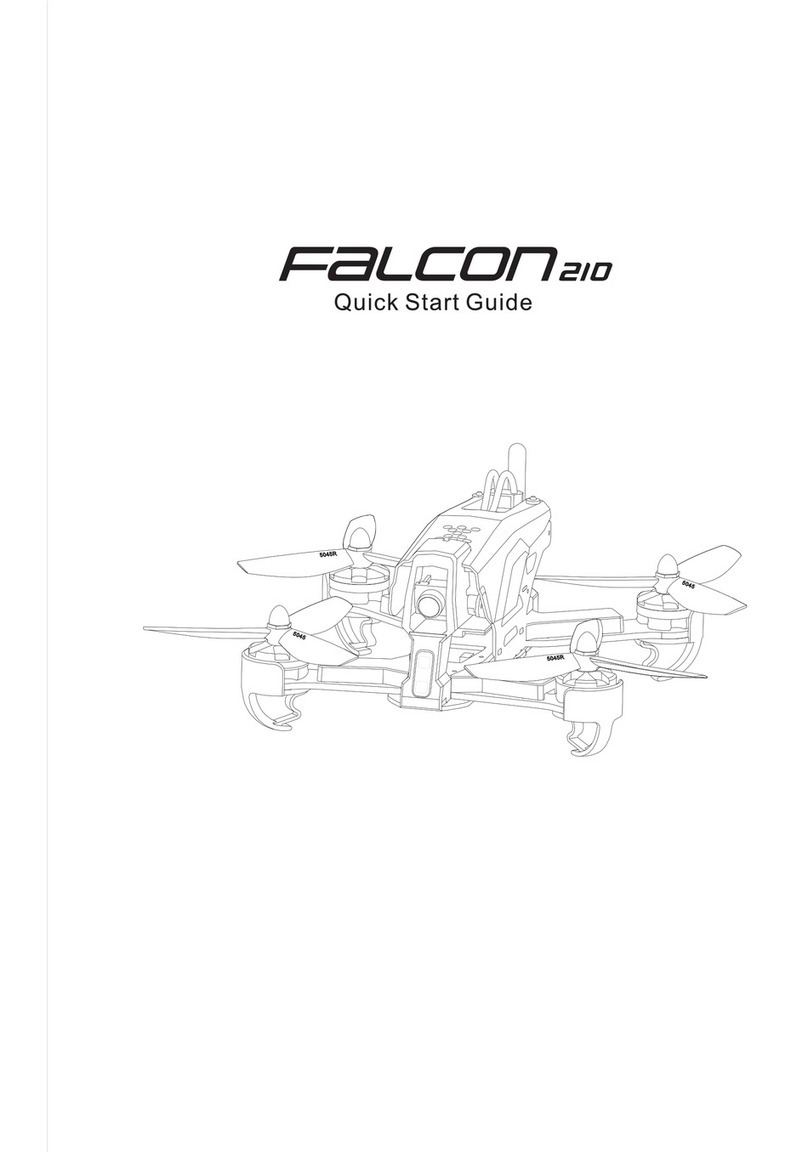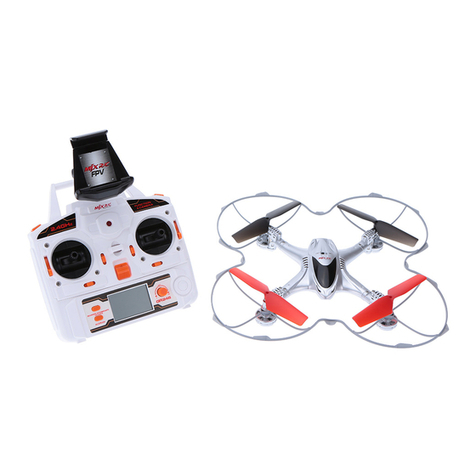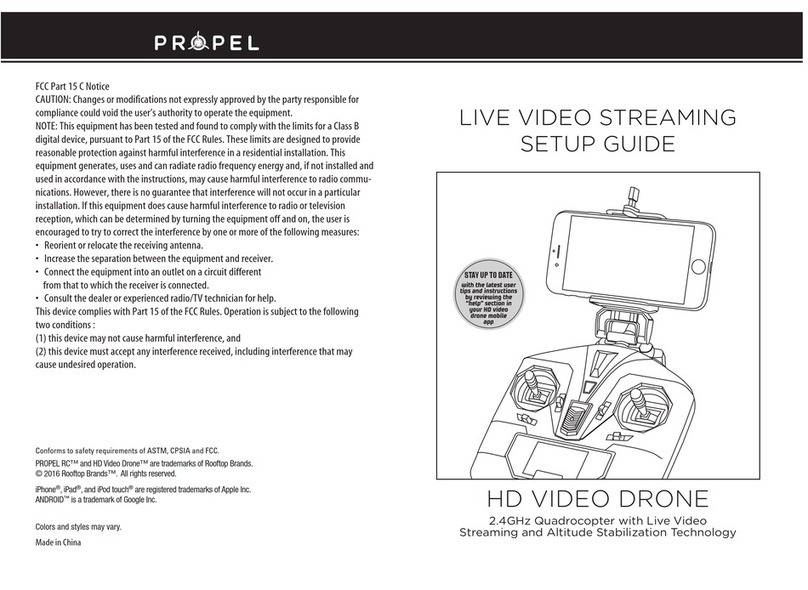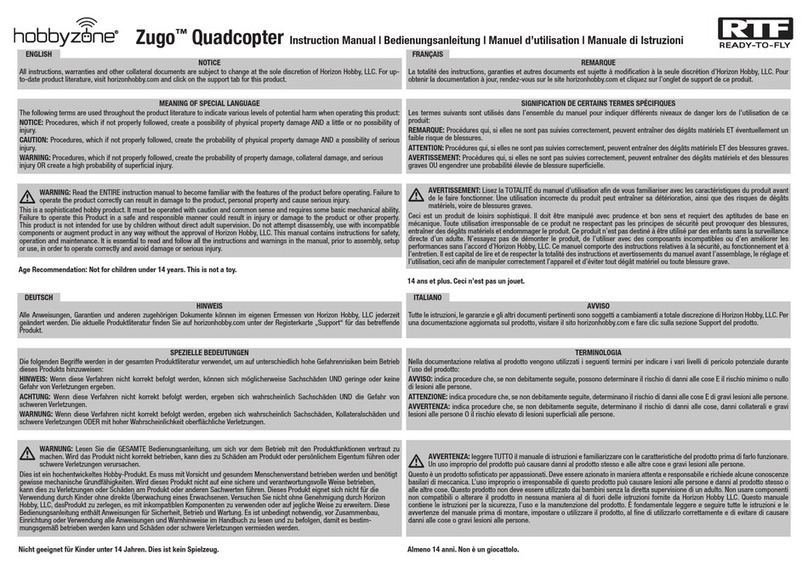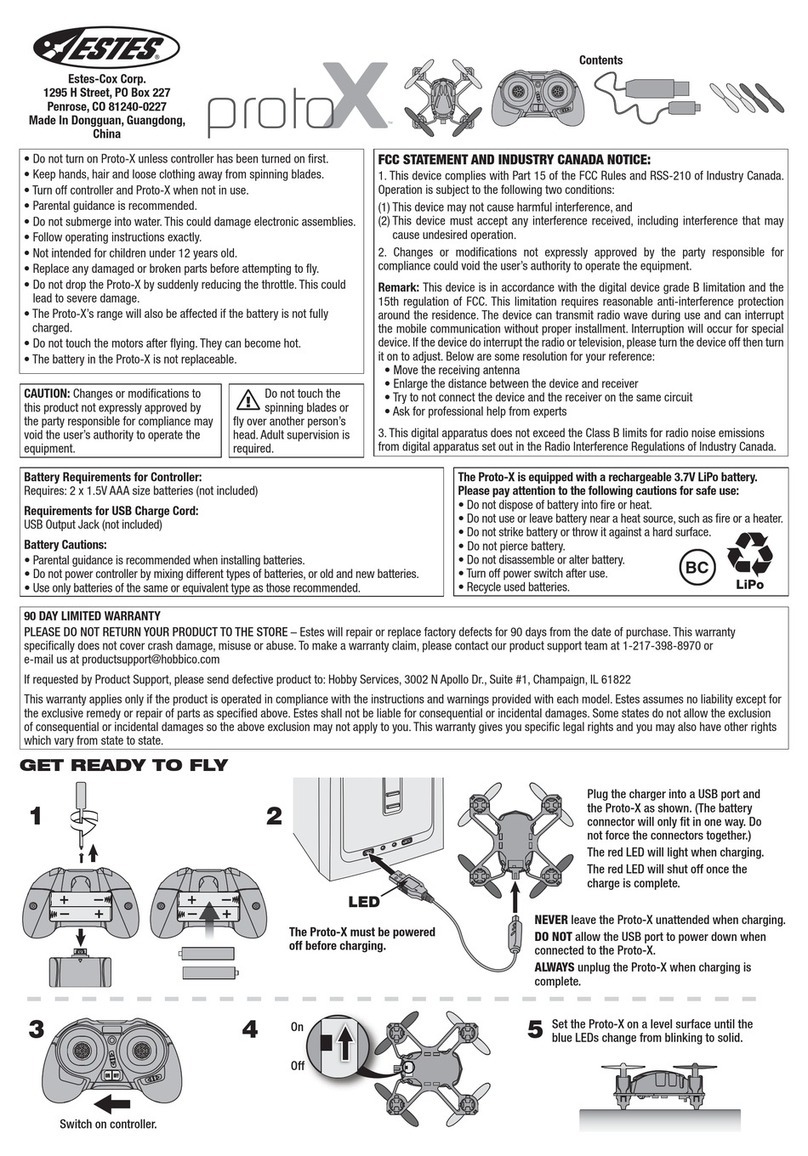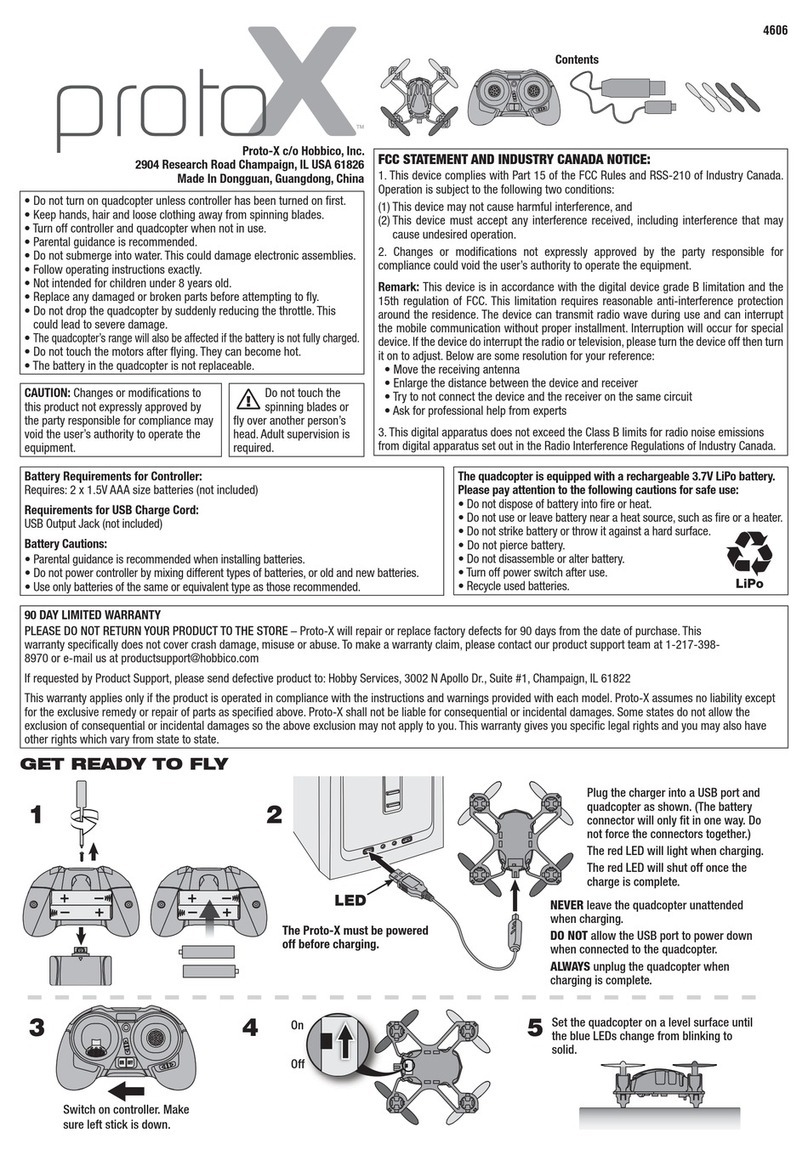
10
EN
Specications
Download the latest version from
http://www.dji.com/matrice-200-series
※This content is subject to change without prior notice.
DJI incorporates HDMITM technology.
The terms HDMI and HDMI High-Definition Multimedia
Interface, and the HDMI Logo are trademarks or registered
trademarks of HDMI Licensing LLC in the United States and
other countries.
Aircraft (M210/M210 RTK)
Dimensions M210: Unfolded, 887×880×378 mm, Folded, 716×220×236 mm
M210 RTK: Unfolded, 887×880×408 mm, Folded, 716×242×236 mm
Weight M210: Approx. 3.84 kg (with two standard batteries), Approx. 4.57 kg (with two optional batteries)
M210 RTK: Approx. 4.27 kg (with two standard batteries), Approx. 5 kg (with two optional batteries)
Diagonal Wheelbase 643 mm
Max Takeoff Weight 6.14 kg
Max Payload M210: 2.3 kg (with two standard batteries), 1.57 kg (with two optional batteries)
M210 RTK: 1.87 kg (with two standard batteries), 1.14 kg (with two optional batteries)
Hovering Accuracy (P-mode with GPS) Vertical: ±1.64 feet (0.5 m) or ±0.33 feet (0.1 m, Downward Vision System enabled)
Horizontal: ±4.92 feet (1.5 m) or ±0.98 feet (0.3 m, Downward Vision System enabled)
Hovering Accuracy (D-RTK) Vertical: ±0.33 feet (0.1 m); Horizontal: ±0.33 feet (0.1 m)
Max Angular Velocity Pitch: 300°/s, Yaw: 150°/s
Max Pitch Angle P-mode: 25° (Forward Vision System enabled: 25°);
S-mode: 30°, A-mode: 25°
Max Ascent Speed 16.4 ft/s (5 m/s)
Max Descent Speed (vertical) 9.8 ft/s (3 m/s)
Max Speed S-mode: 64.8 kph (40.3 mph); P-mode/A-mode: 57.6 kph (35.8 mph)
Max Service Ceiling Above Sea Level 9842 feet (3000 m, with 1760S propellers)
Max Wind Resistance 39.36 ft/s (12 m/s)
Max Flight Time (with standard batteries) M210: 27 min (no payload), 13 min (takeoff weight: 6.14 kg)
M210 RTK: 23 min (no payload), 13 min (takeoff weight: 6.14 kg)
Max Flight Time (with optional batteries) M210: 38 (no payload), 24 min (takeoff weight: 6.14 kg)
M210 RTK: 32 (no payload), 24 min (takeoff weight: 6.14 kg)
Supported DJI Gimbals Zenmuse X4S/X5S/XT/Z30
Supported Gimbal Congurations Single Downward Gimbal, Dual Downward Gimbals, Single Upward Gimbal
Ingress Protection Rating IP43
GNSS GPS+GLONASS
Operating Temperature -4° to 113° F (-20° to 45° C)
Remote Controller
Operating Frequency 2.400-2.483 GHz; 5.725-5.825 GHz
Max Transmitting Distance
(unobstructed, free of interference)
2.4 GHz: 4.3 miles (7 km, FCC); 2.2 miles (3.5 km, CE); 2.5 miles (4 km, SRRC)
5.8 GHz: 4.3 miles (7 km, FCC); 1.2 miles (2 km, CE); 3.1 miles (5 km, SRRC)
EIRP 2.4 GHz: 26 dBm (FCC); 17 dBm (CE); 20 dBm (SRRC)
5.8 GHz: 28 dBm (FCC); 14 dBm (CE); 20 dBm (SRRC)
Power Supply Extended Intelligent Battery (Model: WB37-4920mAh-7.6V)
Output Power 12 W (Without supplying power to monitor)
USB Power Supply iOS: 1 A 5.2 V (max); Android: 1.5 A 5.2 V (max)
CrystalSky Monitor DJI CrystalSky 7.85inch, Resolution: 2048×1536;
Brightness: 1000 cd/m2; Operating System: Android 5.1; Storage: ROM 64GB
Operating Temperature -4° to 104° F (-20° to 40° C)
Downward Vision System
Velocity Range <32.8 ft/s (10 m/s) at the height of 6.56 feet (2 m)
Altitude Range <32.8 feet (10 m)
Operating Range <32.8 feet (10 m)
Operating Environment Surfaces with clear patterns and adequate lighting (>15 lux)
Ultrasonic Sensor Operating Range 0.33-16.4 feet (10-500 cm)
Ultrasonic Sensor Operating Environment Non-absorbing material, rigid surfaces (thick indoor carpeting will adversely affect performance)
Forward Vision System
Obstacle Sensing Range 2.3-98.4 feet (0.7-30 m)
FOV Horizontal: 60°; Vertical: 54°
Operating Environment Surfaces with clear patterns and adequate lighting (> 15 lux)
Upward Infrared Sensing System
Obstacle Sensing Range 0-16.4 feet (0-5 m)
FOV ±5°
Operating Environment Large, diffuse, and reective obstacles (reectivity >10%)
Intelligent Flight Battery (Standard, Model: TB50-4280mAh-22.8V (TB50-M200); Optional, Model: TB55-7660mAh-22.8V (TB55))
Capacity 4280 mAh (standard), 7660 mAh (optional)
Voltage 22.8 V
Battery Type LiPo 6S
Energy 97.58 Wh (standard), 176.93 Wh (optional)
Net Weight (Single One) Approx. 520 g (standard), Approx. 885 g (optional)
Operating Temperature -4° to 113° F (-20° to 45° C)
Charging Temperature 41° to 104° F (5° to 40° C)
Max Charging Power 180 W
Charger (Model: IN2C180)
Voltage 26.1 V
Rated Power 180 W
Charging Hub (Model: IN2CH)
Input Voltage 26.1 V
Input Current 6.9 A
MATRICE and DJI are trademarks of DJI.
Copyright © 2017 DJI All Rights Reserved.
Designed by DJI. Printed in China.
